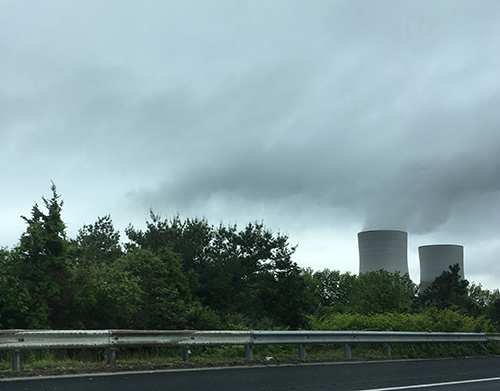Brayton Point Power Plant Stubborn, Dirty Neighbor
June 1, 2017

SOMERSET, Mass. — Power plants can be difficult neighbors. Just ask Pauline Rodrigues. The local resident fought for more than a decade to convince the Brayton Point Power Station to reduce its air pollution. Family and friends, she said, suffered from asthma and other illnesses caused by the emissions from what was the largest and most polluting coal-fired power plant in New England.
“I never thought the day would come,” Rodrigues said May 30, the day before the fossil fuel facility stopped generating electricity.
As an activist for the Coalition for Clean Air South Coast, she endured contempt from neighbors and unions who wanted to protect jobs and tax revenue. At its peak, Brayton Point employed more than 200 people and paid millions in revenue to the town. But for Rodrigues, who is suffering from recurring breast cancer, health matters the most.
“My only concern was clean air,” Rodrigues said. “The fact that my grandchildren will breath cleaner air is more important to me.”
During its 54 years of operation, the 1,611-megawatt power plant was often listed among the Dirty Dozen of all polluters in the region, inflicting major harm on air and water quality while resisting efforts to fix its flaws.
According to a Harvard University study, emissions from the Brayton Point Power Station were responsible for: 106 premature deaths annually; 1,140 emergency room visits a year; 28,900 asthma attacks per year; and 199,000 daily incidents of upper respiratory symptoms.
Its water intake and discharge, which peaked at about 1 billion gallons a day, altered the habitat of Mount Hope Bay and the nearby Taunton and Lee rivers. The facility’s water intake killed millions of fish and shellfish and their larvae and eggs.
The discharged water from cooling and stormwater runoff contained metal cleaning waste, oil, grease, suspended solids, copper, iron, coal-pile runoff, chlorine, and some 20 other chemicals.
Local, state and national health and environmental agencies and advocates fought for years to get Brayton Point to clean up or shut down.
John Torgan served for 11 years on a power plant advisory committee as baykeeper for Save The Bay. The owners of Brayton Point resisted calls to fix its problem with cooling water. Massachusetts and Rhode Island eventually sued the Environmental Protection Agency to force the power plant to comply with the federal Clean Water Act. The lawsuit prevailed and, eventually, the company spent $570 million to build two 500-foot-high cooling towers.
Torgan sees the cooling towers as a win for the health of upper Narragansett Bay and a success of policymaking that was enforced through a system of legal and regulatory checks and balances. But he readily admits that coal-fired power plants are inherently flawed.
“Brayton Point has always been a poster child for dirty coal,” Torgan said.
Despite high-profile protests and arrests, it wasn’t grassroots activism that led to the closing of Brayton Point, according to Houston-based Dynegy, the current owner of the power plant.
In the end, economic forces and aging equipment shuttered the coal plant. At one point, Brayton Point burned 3 million tons of coal annually. But cheaper natural gas made running the massive plant unprofitable.
What’s next?
Dynegy isn’t discussing its plans for the 300-acre peninsula on Mount Hope Bay. Offshore wind farm developer Denmark-based DONG Energy said it intends to connect its undersea cable to the electric grid at Brayton Point.
Environmental groups and other progressive planners have proposed a renewable energy-focused business park with residential and commercial neighborhoods. The taxpayer-funded Massachusetts Clean Energy Center deferred comment to Gov. Charlie Baker’s Office of Energy and Environmental Affairs. A spokesman said the governor is committed to achieving aggressive renewable-energy goals.
The Brayton Point property connects to a natural gas pipeline and has the high-voltage power lines that would make it suited for a natural gas plant. But given the costs of retrofitting its boilers and other upgrades, it’s unlikely that the power plant could be converted to running on a single fossil fuel.
For now, a reduced work crew will stay on for the decommissioning process in June and July, according to Dynegy spokesman David Onufer.
Categories
Join the Discussion
View CommentsRelated Stories
Your support keeps our reporters on the environmental beat.
Reader support is at the core of our nonprofit news model. Together, we can keep the environment in the headlines.
We use cookies to improve your experience and deliver personalized content. View Cookie Settings



